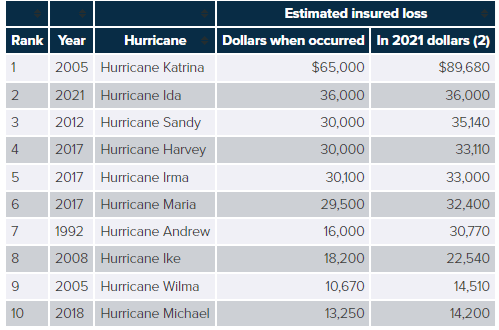The hurricane research team at Colorado State University in its early forecast of the 2023 Atlantic hurricane season is predicting slightly below-average activity.
The CSU Tropical Meteorology Project team is predicting 13 named storms during the June 1 to Nov. 30 Atlantic hurricane season, with six hurricanes and two major hurricanes of at least Category 3 strength (sustained winds of 111mph or more). The probability of major hurricane landfall is estimated to be 43 percent — very close to the long-period average.
The average hurricane season contains about 14 named storms, seven hurricanes and three major hurricanes.
The team continued to say that there is “larger-than-normal uncertainty” with its early outlook for 2023 hurricane activity due to some doubt surrounding the weather condition known as El Niño, which can inhibit the formation, or prevent strengthening, of hurricanes with vertical wind shear.
“Sea surface temperatures in the eastern and central Atlantic are much warmer than normal, so if a robust El Niño does not develop, the potential still exists for a busy Atlantic hurricane season,” CSU said.
The 2022 Atlantic hurricane season was close to average, with 14 named storms, eight hurricanes and two major hurricanes. However, one of those was Hurricane Ian—among the strongest hurricanes to ever make U.S. landfall, hitting Florida on Sept. 28. Ian was also one of the costliest hurricanes in history in terms of insured losses, causing an estimated $60 billion. The storm will only trail 2005’s Katrina in insured losses.

Late last month AccuWeather meteorologists predicted the 2023 season will have 11-15 named storms, four to eight hurricanes, and one to three major hurricanes. AccuWeather said El Niño is likely to develop by the second half of the summer but “there remains a question about how strong El Niño will be from late August to early October, which is historically when tropical activity is at its highest.”




















 Evolving Trends in Coverage Litigation: What Carriers Need to Know
Evolving Trends in Coverage Litigation: What Carriers Need to Know  The Power of the First Offer: Anchoring, Evidence and the Battle for Perception
The Power of the First Offer: Anchoring, Evidence and the Battle for Perception  Getting the Embedded Ecosystem Right
Getting the Embedded Ecosystem Right  The Future of Knowledge in Insurance: From Training to AI-Powered Productivity
The Future of Knowledge in Insurance: From Training to AI-Powered Productivity 




